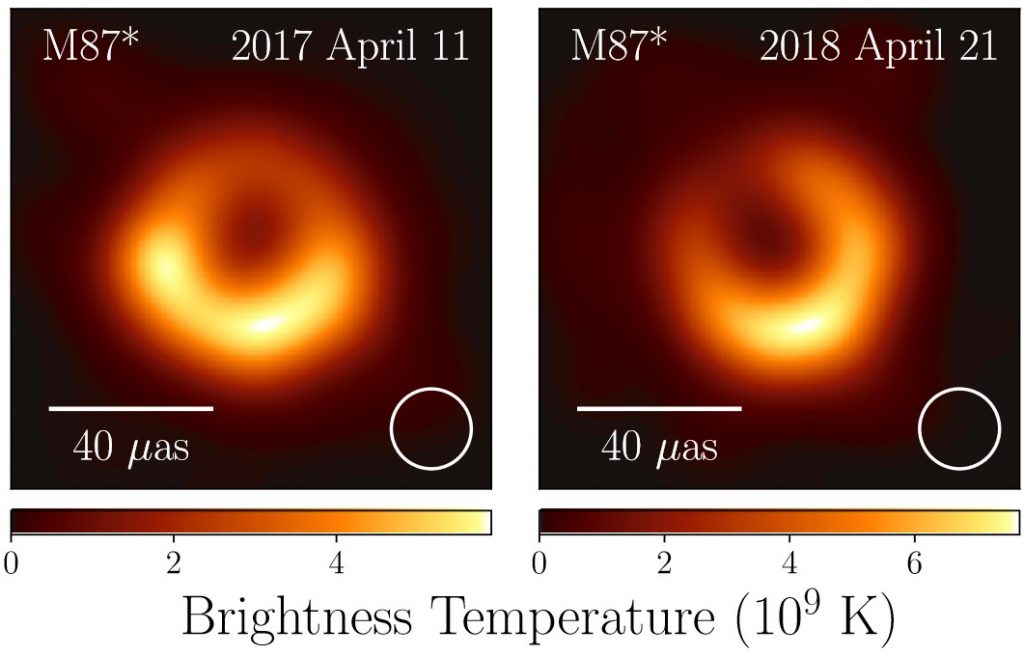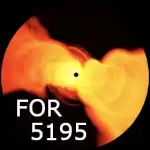19.01.2024:
Members of our research unit have contributed to a second depiction of the shadow of the central supermassive black hole in the giant elliptical galaxy Messier 87.
As part of the Event Horizon Telescope (EHT) Collaboration, the millimetre-wave astronomers have analysed a dataset from April 2018. The data were taken simultaneously by the Event Horizon Telescope, a compound of nine (as of 2018) millimetre-wave telescopes distributed around planet Earth. Applying several different and novel algorithms, the scientists could reconstruct an image that shows an asymmetrically emitting ring with diameter of 43 microarcseconds and with brightness maximum about the southern direction around a central, dark, circular patch, the so-called shadow. The emission is thought to be emanating from plasma swirling around the black hole in an accretion flow. The ring-like structure and its asymmetry is an effect of the interplay between gravitational bending of light rays in the vicinity of the spinning black hole and of Doppler boosting of the radiation. Similar emission structures were predicted decades ago and can be reproduced also within our GRMHD simulations. “We develop state-of-the-art numerical simulations and use our own supercomputing infrastructure to model and interpret the EHT observations of M 87 . Only by combining simulations and observations of M 87 can we gain new, deep insights into the physics of black holes and accretion disks” narrates Dr. Christian Fromm of our project 1, who is active in the EHT collaboration.

This new depiction is well comparable to an earlier image of the Messier 87 black-hole shadow, published in 2019 and based on data from the 2017 observing campaign. In comparison to the 2017 dataset, the 2018 dataset was taken with inclusion of the Greenland 12-metre telescope, enhancing the coverage in the u,v-plane. Moreover, the 2018 dataset was recorded at several observing frequencies with higher bandwidth, allowing for spectral studies of the supermassive black hole. There is a notable consistency between both images. The structural variability in the brightness distribution between the images can be explained within the physical processes happening in an accretion disk around the black hole. While the 2017 image received a high degree of interest and excitement in media, we have now a confirmation and can be confident that our analysis pipeline is not corrupted by unknown failures. This is an important step towards going deeper into the scientific assessment of the results.
More information:
Press release in German by Julius-Maximilians-Universität Würzburg
Press release by Max-Planck-Institut für Radioastronomie
DFG Research Unit (Forschungsgruppe) FOR 5195 – Relativistic Jets in Active Galaxies
Funded by the Deutsche Forschungsgemeinschaft (DFG, German Research Foundation)
